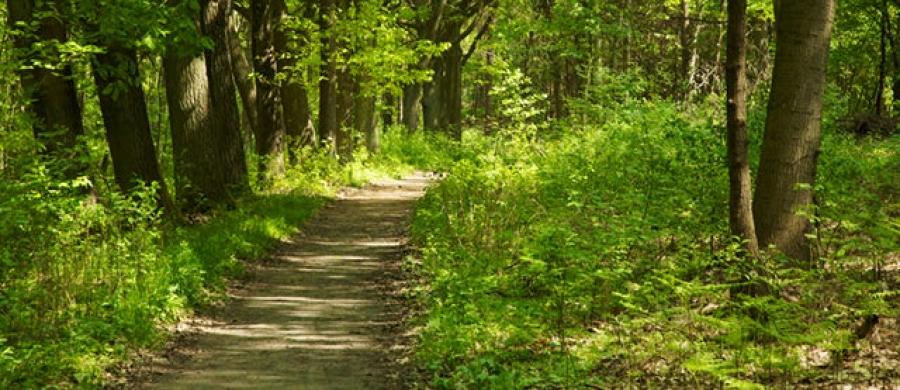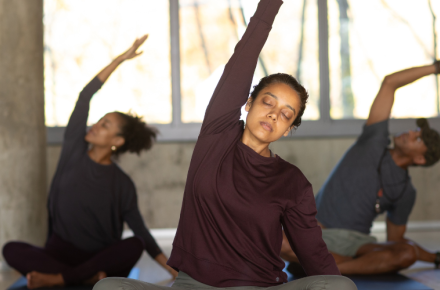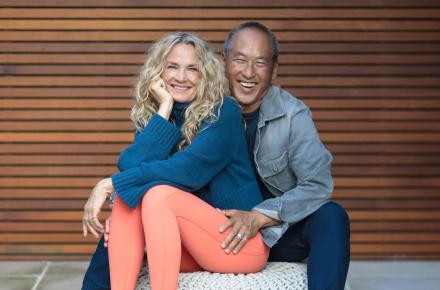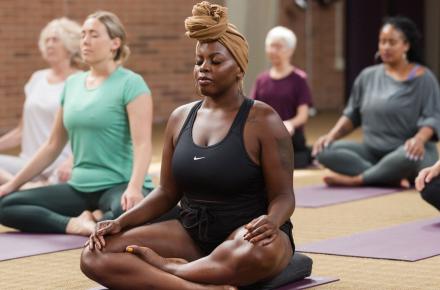Feet First: Guidelines for Walking Meditation


There’s nothing lovelier than a walk outdoors, whether the landscape is covered with freshly fallen snow or lush with green foliage and blossoming flowers. But there’s another kind of walking that can be equally delicious: walking meditation, an opportunity to slow down and luxuriate in the smallest detail of a process we usually take for granted.
Slowing down your walking has tremendous benefits. First, it refines your level of concentration. For many, it’s one of the quickest, most effective ways to enter a meditative state. It’s also a great lead-in to sitting meditation. Because walking meditation brings you so effortlessly into a meditative state, you can move into sitting meditation with greater focus and less chatter in the mind. Ultimately, walking meditation can enable you to experience the universe in a totally new way.
As in other concentration practices, such as meditation on the breath or mantra meditation, walking meditation focuses on an object of concentration. In the beginning, it’s the feet and the process of placing one foot in front of the other. With this more active object of concentration, many find they stay focused and present better than they do in seated meditation. So, if you’re one of those who find it difficult to sit still for a period of time, walking meditation might be just the thing for you.
The practice is common to both Eastern and Western contemplative traditions, which means that there are many ways to do it. My preferred method is a technique of walking back and forth on a path that can be as short as 20 steps or as long as 30 feet. It’s the perfect manifestation of the quintessential yogic phrase, “Nowhere to go, nothing to do.”
Guidelines for a Simple Walking Meditation
Practice indoors to avoid getting distracted by your surroundings, or by the way others might react to your extremely slow pace. The slowness of your pace is what invokes the state of awareness that refines your level of concentration and enables you to experience more subtle sensations. What you’re practicing is the fifth of Patanjali’s eight limbs of yogic practice: pratyahara—withdrawing your focus from the outer world to the inner.
Prepare your body. Do a few stretches to get into your body, then bring yourself to one end of your path. For a moment, simply feel the weight of your body being supported by the floor. Rock a bit from side to side, then front and back, to find the balance point. Lift out of your waist to be sure that your posture is good. “Smile” with your collarbones to bring your shoulders into alignment, and gaze softly at the floor a distance ahead of you. It’s helpful to clasp your hands either in front or in back of you; if they’re simply hanging at your sides, they can begin to feel very heavy. Try walking barefoot or in socks, so you can experience more easily the subtle movements of the feet.
Divide your practice time into three segments of about eight to 10 minutes each, decreasing your pace for each segment. Start at what I call a “springtime pace.” If you were mentally labeling your action, you might think “stepping, stepping” or “placing, placing” as you place each foot on the ground. Slowing down for the next segment, you might think “Lifting, placing. Lifting, placing.” And finally, at your slowest pace: “Rolling the foot, lifting, moving through the air, placing. Rolling, lifting, moving, placing.” The next time you practice, you can stick to the pace you’ve found to be most effective for you.
Take the first step. Very consciously, take one step and then another. Stay with the simple focus on the foot as it moves and on the sensations of the whole body in the process of walking. Notice. Enjoy. You’re doing walking meditation.
© Kripalu Center for Yoga & Health. All rights reserved.














































